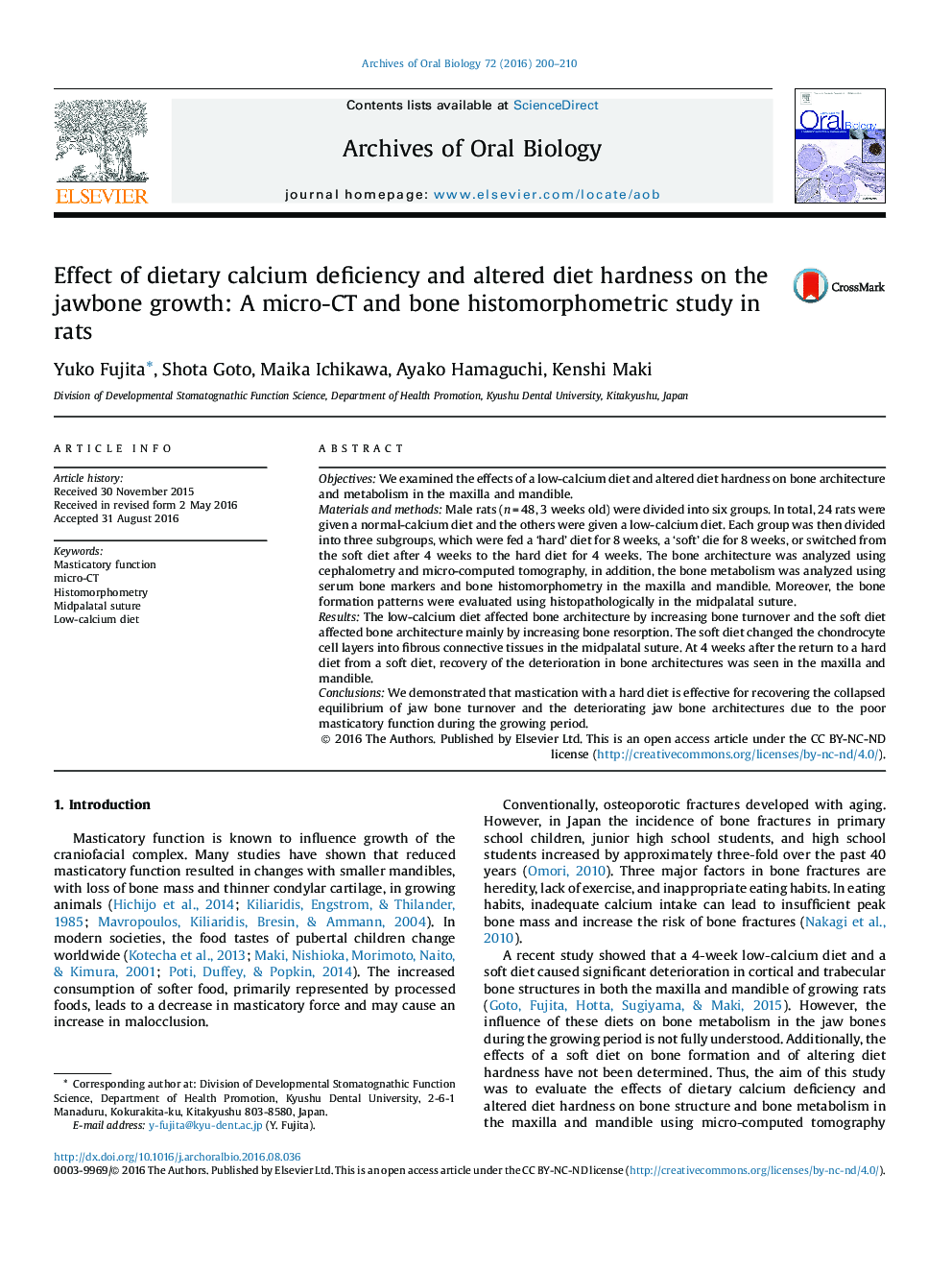| Article ID | Journal | Published Year | Pages | File Type |
|---|---|---|---|---|
| 6050698 | Archives of Oral Biology | 2016 | 11 Pages |
â¢The low-calcium diet affected bone architecture by increasing bone turnover.â¢The soft diet affected bone architecture mainly by increasing bone resorption.â¢Masticatory function maintains an equilibrium state of jaw bone turnover.â¢Masticatory function is essential in promoting suture chondrocytic growth.
ObjectivesWe examined the effects of a low-calcium diet and altered diet hardness on bone architecture and metabolism in the maxilla and mandible.Materials and methodsMale rats (n = 48, 3 weeks old) were divided into six groups. In total, 24 rats were given a normal-calcium diet and the others were given a low-calcium diet. Each group was then divided into three subgroups, which were fed a 'hardÌ diet for 8 weeks, a 'softÌ die for 8 weeks, or switched from the soft diet after 4 weeks to the hard diet for 4 weeks. The bone architecture was analyzed using cephalometry and micro-computed tomography, in addition, the bone metabolism was analyzed using serum bone markers and bone histomorphometry in the maxilla and mandible. Moreover, the bone formation patterns were evaluated using histopathologically in the midpalatal suture.ResultsThe low-calcium diet affected bone architecture by increasing bone turnover and the soft diet affected bone architecture mainly by increasing bone resorption. The soft diet changed the chondrocyte cell layers into fibrous connective tissues in the midpalatal suture. At 4 weeks after the return to a hard diet from a soft diet, recovery of the deterioration in bone architectures was seen in the maxilla and mandible.ConclusionsWe demonstrated that mastication with a hard diet is effective for recovering the collapsed equilibrium of jaw bone turnover and the deteriorating jaw bone architectures due to the poor masticatory function during the growing period.
